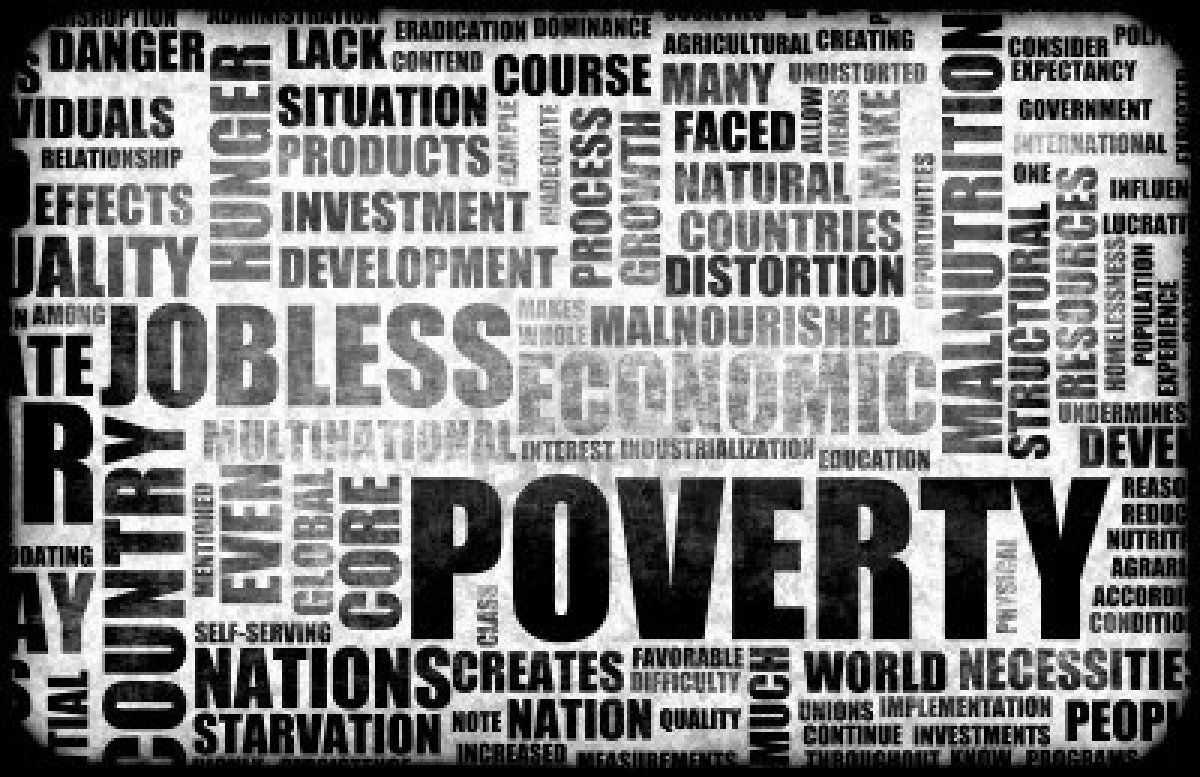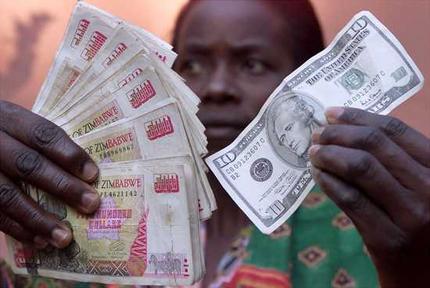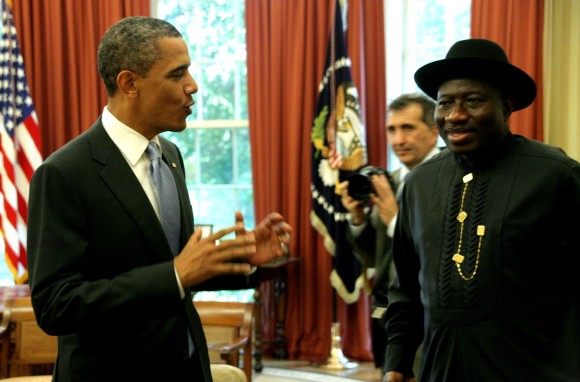
The slogan “make poverty history” has been used by development pundits and pop star philanthropists for years. Now, in a bid to turn words into deeds, it is being discussed as a universal global target to be met within a generation.
The Millennium Development Goals (MDGs), eight poverty-reduction targets that were signed during a world summit in 2000, will be retired next year. Diplomats, aid experts and UN officials are currently negotiating the 15-year objectives that will replace them in 2016.
Discussions are ongoing, but they are likely to be called the Sustainable Development Goals (SDGs) and feature a dozen-or-so targets. The headline goal is likely to be the end of extreme poverty and having nobody living on less than US$1.25 a day by 2030.
The new goals will not be finalized until September 2015, but the framework is already agreed. Proposed goals include raising the quality of schools for all children and steps towards providing universal health care to the world’s 7 billion people.
More controversial planned targets include making governments less corrupt, halting climate change, streamlining immigration systems and limiting how much the richest people in any society can earn as compared to the poorest.
Gina Lucarelli, a policy expert for the UN Development Programme, described a game-changing debate that – at least on paper – purports to realize the long-stated goal of an equitable and sustainable planet.
“The diplomats want it to be measurable and ambitious, they want to be the generation of negotiators who broke through with something transformative,” she said. “It’s not business as usual. We have the resources. We have the expertise. We can really change things.”
While few development economists debunk the MDGs, opinions are mixed over the effectiveness of targets agreed upon in New York in changing realities on the ground in the neediest parts of Africa, Asia and South America.
This is partly because some MDGs will succeed by the end of 2015 and others will not. The goal of halving the number of people living on less than $1.25 a day saw rapid progress and was met five years ahead of schedule.
Other targets, such as enrolling all girls and boys in primary schools or slashing by three quarters the number of women who die in childbirth, have achieved partial success but will remain unfulfilled by next year’s deadline.

Importance of targets overstated?
Another reason for caution is the lack of clarity over whether UN goals caused the gains. Many analysts agree that advances against poverty were a by-product of double-digit growth in the populous emerging markets of China and India.
“We can massively overstate the importance of targets,” said Claire Melamed, from the UK-based Overseas Development Institute. “At best, they tweak at the margins. The main driver in a country is not UN targets. From China to Thailand and Kenya, governments are more concerned by their internal political dynamics.”
There are other criticisms of the MDGs: they are aspirational aims and not legally-binding commitments; they were weak on climate change and on making rich countries help the developing world via trade, debt relief and investment.
Aid workers in the field say the MDGs can be misleading. Why count the percentage of children enrolled in primary schools when there are no teachers in classrooms? Others question the value of shared metrics for such disparate countries as Bolivia, Botswana and Belarus.
But structural problems and missed targets have not consigned the MDGs to the dustbin of history. Governments are debating a successor deal. Talks begin in earnest next year. As Melamed says: “Lots of UN agreements wither and die. This one didn’t.”
Amina Mohammed is the special adviser on post-2015 Development Planning for UN Secretary-General Ban Ki-moon. For her, the MDGs served to create a brand identity for the development agenda that did not exist before.
“The MDGs were the first time we cannibalized these platforms – health for all, education for all – and brought them together,” she said. “It provided momentum. We brought the minimum ask and said: ‘We should at least be able to do this’. Then we realized how difficult it was to do.”
An Oxfam report, How Can a Post-2015 Agreement Drive Real Change?, points to MDG successes: setting global norms on such issues as women’s rights; giving activists a campaign tool and nudging governments into action.
Annual reports and league tables act as both carrot and stick for minsters of health, education and transport, compelling them to monitor progress across national borders and ensure they are keeping up with the neighbours.
“Fashions, fads and politicians come and go,” said Alex Evans, from New York University’s Center on International Cooperation. “The MDGs have stood the test of time and created a resonant and long-lasting storyline on global development.”
Danger of slipping backwards
Devising new goals has been a leviathan scheme, pulling together a survey of some 2 million people and outcomes from the Rio+20 UN Conference on Sustainable Development and a 27-member panel of world leaders and luminaries.
Some analysts are already concerned that the target of ending extreme poverty by 2030 is a major overreach. Halving the number of people living on less than $1.25 was “low-hanging fruit”, added Evans. The remainder will be much harder.
He warned that the “breakout generation” of people who recently escaped poverty and live on between $2-13 a day lead such vulnerable lives that gains made over recent decades could easily be rolled back.
“Growth rates in emerging economies are slowing down and infrastructure in mega-cities is really creaking. These people are in poorly-paid work. They are super-exposed to rising prices of food and energy,” he said.
Flawed model?
Danny Burns, from the UK-based Institute of Development Studies, says the remainder of the world’s poorest are often handicapped, LGBT (lesbian, gay, transgender or bisexual), elderly or from an indigenous, religious or ethnic group that is more likely to be marginalized by its government than a beneficiary.
He worked on a study from 29 countries, called Work With Us: How People and Organisations Can Catalyse Sustainable Change. It found that badly planned development projects often push the most impoverished even further to the margins of society.
Burns describes a flaw in the architecture of the SDGs: that the current model of economic growth does not trickle-down to the poorest. Instead, it enriches elites and dooms the poorest to perpetual poverty.
“On one hand, there’s a narrative of ‘leaving nobody behind’. On the other is a narrative of growth and infrastructural development, much of which is causing greater inequality and pushing the poorest to the margins,” he said.
“From land grabs to private companies harming the environment with big economic schemes that push people from their homes, logging projects that force people to the cities – all of these things notionally benefit the economy but don’t benefit the poorest.”
Equality reduction goal
UN diplomats have proposed an inequality-reduction SDG to tackle this. The most popular idea uses the Palma ratio, which seeks to balance the income of the richest 10 percent and the poorest 40 percent of any population.
A key feature of the SDGs is universality, bringing rich-world economies into the scheme. The prospect of wealthy nations agreeing to UN inequality-reduction targets is problematic. They are also likely to oppose liberalizing immigration rules, despite the potential windfall this could bring migrants from poor countries.
But the biggest challenge lies in the switch from “development” to “sustainability” goals. The UN-agreed aid flows of 0.7 percent of rich country wealth amounts to about $130 billion a year – a drop in the ocean of the global economy.
The cash required for sustainability is of a different magnitude. The International Energy Agency estimates that limiting global warming to 2 degrees Celsius will cost $1 trillion each year until 2030 – a figure to make policymakers balk.
Evans points to $150 trillion that is sloshing around the global economy and seeks ways to “de-risk” developing world economies, open up trade and investment flows and “realign the private sector” to deliver poverty-reduction.
“With these sums of money you don’t have to bend the curve that much to achieve enormous impact on the ground in the area of sustainability. But we haven’t worked out how to do that, and that’s one of the conundrums at the heart of the post-2015 debate,” he said.
Conflict
On the flip-side of the negotiation, countries with poor records on government corruption, accountability and political freedom are already raising objections to committing themselves to targets for cleaning up the political class.
All the while, the elephant in the room is conflict. Ending poverty and any other target will be nigh impossible in such countries as Syria, South Sudan and the Central African Republic, where rebels battle government forces.
The SDG talks run alongside those for a legally-binding global treaty on limiting climate change, which is also due to be agreed at the end of 2015. These legacy projects for the UN chief, Ban, come in an era when multilateral efforts often struggle to take root.
For Melamed, there is no guarantee of success in the talks.
“It’s three things in one: an analysis of what people need and want, high-flying moral rhetoric, and a down-and-dirty political negotiation. It’s interesting, but it’s uncertain where this ends up. It could be a pointless, anodyne agreement. But it could be something good,” she said.
[This report does not necessarily reflect the views of the United Nations.]


